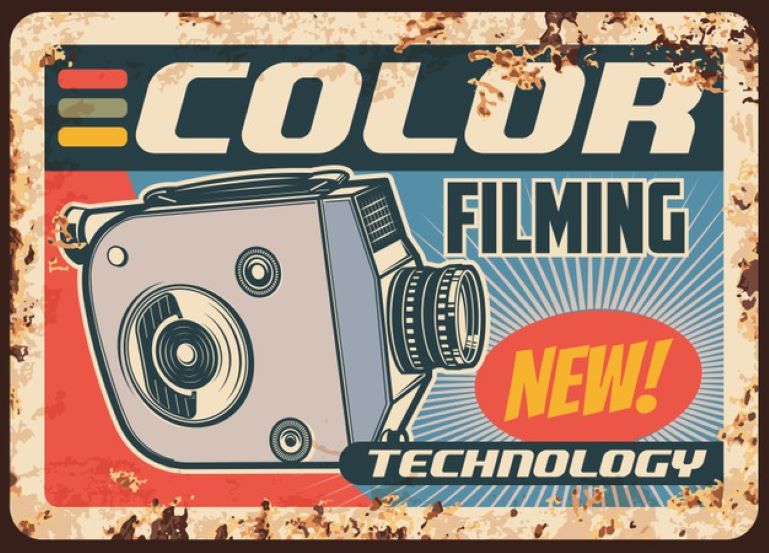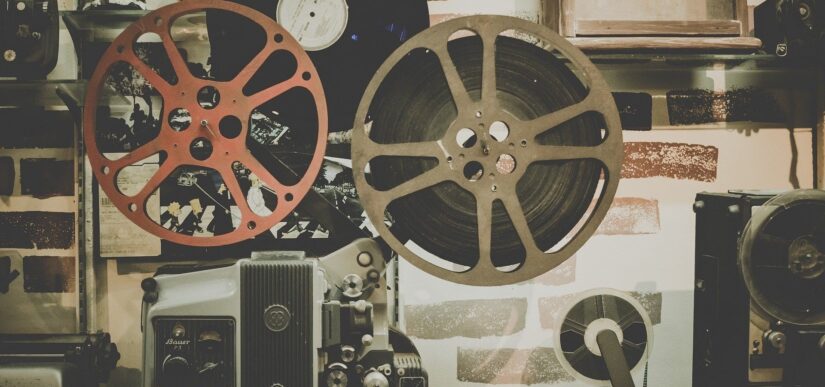Birth and Development of American Cinema
Eager to embark on a cinematic adventure, Thomas Alva Edison began construction of the Black Maria studio in 1892 on the grounds of his laboratory in West Orange, New Jersey.
By 1893, construction of the world’s first soundstage was finished and Edison with his assistant William Dickson was able to begin producing kinetoscope films. Edison’s first videos showed short performances by dancers, acrobats, sportsmen, mostly shot inside the Black Maria, little curiosities for kinetoscope users.
First Experiments in Sound Recording
In 1894 Dickson carried out one of the first experiments in sound recording and synchronization in the Black Maria studios. The short film now known as the Dickson Experimental Sound Film, shows two men dancing to the rhythm of the violin played by Dickson himself.
The following year, however, Dickson left Edison’s company to found the American Mutoscope and Biograph Company which would soon compete with the Edison Manufacturing Company. Realizing that his kinetoscopes, intended for individual viewing, would soon go out of fashion, Edison bought the patent for the projection system developed by Charles Francis Jenkins and Thomas Armat: the vitascope that would have its first public exhibition at New York, in April 1896.
In an attempt to maintain control of the market, Edison, who had patented all the main devices for film production and projection in his name, began filing a series of lawsuits against independent filmmakers and producers, unleashing a real war on patents with the American Mutoscope and Biograph Company, the only company to stand up to it as it could exploit its own patents. Crucial to this company was the possession of the patent on Latham’s curl, a device which, by releasing the pressure on the film inside the camera and projector, and thus preventing it from breaking, made it possible to shoot feature films.
Motion Picture Patents Company
Unable to appropriate this patent, Edison preferred to come to terms with his former assistant’s company. Thus was born, in 1908, the Motion Picture Patents Company, an oligopoly which included, in addition to the Edison and Dickson companies, a few other American producers and the French Pathé and Star Film (brand under which Méliès produced and distributed his films ). Anyone wishing to produce or show a film in the United States had to pay MPPC compensation for the use of the devices to which they owned all the rights.
Thanks to an agreement concluded with Eastman Kodak, MPPC also managed the procurement of motion picture film. The MPPC thus monopolized the domestic market and prevented foreign competitors from gaining access to it. The rivalry first and then the complicity, between the Edison Manufacturing Company and the American Mutoscope and Biograph Company (which will simply be called Biograph Company starting from 1908), slowed down and hindered the development of American cinema in the early twentieth century.

Edwin Stanton Porter was the director who contributed most to the development of American cinema in this first decade of the century. Edison hired him into his company as early as 1896. Starting as an assistant he soon moved on to directing. Porter had the opportunity to view many of the films produced in Europe that Edison’s company distributed in the United States. He carefully studied the works of Brighton directors and was a great admirer of Méliès, as can be seen from the first films he directed. After all, the copyrights on the films were not protected, the purchased films could be copied, imitated, reassembled, this meant that the style of the original cinema was an international style: a novelty that appeared in this or that film could soon be assimilated and developed by another director.
First Feature Films
Uncle Tom’s Cabin, an adaptation of the novel of the same name by Harriet Beecher Stowe, which Porter shot in 1903, with a duration of almost fifteen minutes, was among the very first "feature films" produced in the United States. This work is often cited as the first to make use of captions, even if there is no lack of previous cases, Porter was undoubtedly the first among American directors to make use of this technique which will be fundamental in silent cinema.
The film, which re-proposes only some of the most significant episodes of Stowe’s novel (after all very popular and well known at the time), consists of a succession of pictures shot with a fixed camera, each of which presents a unitary and accomplished action. The captions, placed between one painting and another, briefly describe the content of the episode that follows and are not yet used to illustrate the dialogues between the characters.
Fictional Cinema Triumf
As this film demonstrates, fictional cinema was now triumphing in the tastes of the public and as films of longer duration were becoming established, the plots to be carried out became more and more complex and articulated. Porter realized that the public appreciated a film the more clear and understandable the exposure was. He understood that the clarity of a film depends mainly on the editing. The assault on the train, which Porter shot in 1903, surprises not only for its sequences filmed outdoors, but above all for the sharpness of the cinematic story that soon transformed it into the most commercially successful film of those years.
In editing his film, Porter chooses to follow all the phases of the escape of the bandits in full, then goes back to tell us about those of the alarm and the search for criminals. In a more modern movie, the director would probably have alternated the scenes of the two narrative sequences. However, the success of this movie was such that Edison asked Porter to make other similar films. Imitations and parodies were not long in coming and this is how The assault on the train will eventually give rise to a new film genre: the western.



